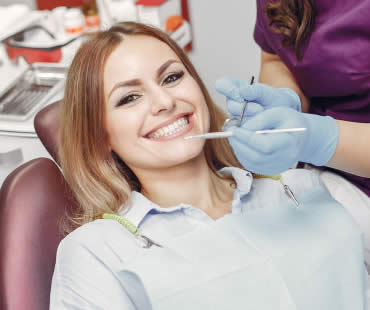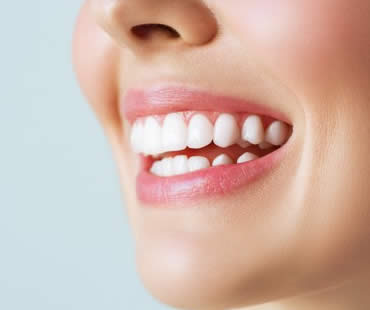
Aug 19, 2022 | Dental Topics 3, Dental Information, Blog
Everyone wants to attain a brilliant, white smile. Modern dentistry can help you achieve this goal with Invisalign teeth whitening or cosmetic enhancements such as veneers or porcelain crowns. Brushing and flossing will help you keep your smile in prime condition. Your diet can impact your teeth as well. Certain foods and beverages can darken your teeth, including:
• Tea Time
Considered a healthy beverage, tea may not keep your teeth white. In fact, black tea can leave more stains than coffee.
• Saucy Saucy
Yummy extras like soy sauce, tomato sauce, and curry sauce may taste delicious, but they have significant potential in the stain department. Choose lighter cream sauces or brush right away to limit issues.
• Sports Power
Highly acidic beverages, like sports or energy drinks, erode tooth enamel and make teeth more susceptible to stains. Try water when you exercise as a safer choice for your smile.
• A Little Wine
If a drink will stain your linens, it can also alter the appearance of your pearly whites, so limiting your intake of wine can protect your smile.
• Berry Good
Though blackberries, cherries, and blueberries are great for your body, the deeply pigmented molecules in these fruits can stick to enamel and cause discoloration. Pies and juices containing these foods can also stain teeth.
• Bubbling Over
Frequently a cause of stains, sodas and other carbonated drinks have acid and chromogens, which can lead to serious stains. Even lighter colored drinks have enough acid to allow staining from other foods and beverages.
If you live in the Central Falls area contact us today

Sep 10, 2021 | Dental Topics 3, Dental Information, Blog
You don’t have to grace the movie screens or magazine covers to have a magnificent smile. With the modern cosmetic dental procedures offered at Brown, Reynolds & Snow Dentistry, you can achieve a gorgeous appearance through simple options like teeth whitening, cosmetic bonding, or Invisalign clear aligners. The following tips will help you put your best smile forward, no matter what else you decide to do:
• Make dental visits a priority. The American Dental Association (ADA) recommends checkups twice a year. These appointments allow your dentist to monitor your oral health and address any problems that arise. Plus, the cleanings leave your smile in tip-top shape.
• Follow a good oral care routine. To keep your smile looking and feeling great, you need to brush at least twice a day and floss regularly. If you don’t keep up with these tasks, you may increase the chances of developing issues like tooth decay and gum disease.
• Create a natural look. The most attractive smiles are the ones that don’t look artificial. Your mouth and lips help create the whole effect. Keep your facial muscles relaxed, and moisturize your lips to complete the entire look.
• Try to relax. Overall happiness contributes to the impression you give others, including in your smile. Try to remain stress-free so that your inner peace and joy will be reflected in your smile’s glow.
• Practice makes perfect. If you feel nervous, there’s no harm in trying out your smile. Use pictures of yourself that you like as examples; then, make an effort to smile at random strangers to boost your confidence.
Schedule your appointment at our Central Falls dental office
May 20, 2022 | Dental Topics 3, Dental Information, Blog
If you have a true dental emergency, make sure to consult your dentist right away. Some situations may arise, however, that after hours, so it’s important to know how to proceed. These tips will help you take good care of yourself or someone you love:
• Bitten lips, cheeks or gums
First, gently rinse the area with cool water. Apply light pressure with gauze or a wash cloth. Control swelling with crushed ice in a Ziploc bag.
• Bleeding gums
Usually caused by gum disease or brushing too hard, treat bleeding gums by rinsing with warm water and creating a regular home care routine that includes brushing twice a day and flossing regularly. See your dentist for a complete exam.
• Canker sores
Rinse the area with warm salt water. Avoid spicy, acidic, or very hot foods when you have an open sore. If the area doesn’t heal in two weeks, contact your dentist.
• Broken or cracked tooth
Carefully rinse the area with water, salt water if possible. Don’t remove any pieces and bring all fragments with you to the dentist’s office.
• Loose baby tooth
Don’t pressure your child to pull the tooth. Encourage your son or daughter to wiggle the tooth side to side as well as back and forth to help free the tooth.
• Teething pains
Place a wash cloth in the freezer and allow your baby to suck on it to relieve pain. Mild over-the-counter analgesics may also help.
• Toothaches
Avoid irritating the tooth. Don’t bite down on the area, and avoid hot or cold substances. Schedule an appointment with the dentist as soon as possible.
If you live in the Central Falls area contact us today

Oct 28, 2022 | Dental Topics 3, Dental Information, Blog
Seeing your dentist twice a year is an important part of keeping your oral health in good condition. While this activity may not top the list of fun things to do, a dental visit doesn’t have to make you miserable either. With a little planning, you can ensure that your dental visit is a positive experience.
• Find the right dentist.
Selecting a dentist that you feel comfortable with will go a long way towards creating a good dental visit. At Brown, Reynolds & Snow, we understand that finding doctors with broad knowledge and expertise in all areas of dentistry will provide you with that extra incentive and confidence in seeking the smile you have always desired.
• Provide all the facts
Your dentist can do a better job meeting your needs if you are up front about any concerns you have or any problems you have been experiencing.
• Take care of your mouth
If you don’t brush and floss regularly, you are setting yourself up to fail. Good home care can prevent problems like gum disease and tooth decay from developing, which will save you extra time in the dental chair.
• Schedule routine exams
When you don’t see a dentist for years, your mouth won’t be in the best condition. Visiting the dentist twice a year ensures that you get professional cleanings and it allows the doctor to watch for signs of trouble.
• Try to relax
Deep breathing exercises or mediation may calm your nerves. If you feel especially anxious about your dental visits, talk with the dentist about your fears, and see what options the practice has available to make you more comfortable.
If you need a dentist in Central Falls contact us today

May 27, 2022 | Dental Topics 3, Dental Information, Blog
The basic definition of oral health is the wellbeing of your teeth, gums, mouth, and supporting tissues. As well, the idea of oral health also has to do with having no pain or problems that interfere with your mouth or its functions. Without a toothache or bleeding gums, you may give your oral health little thought. Often, people take their oral health for granted, but it can actually impact your whole body.
Common Oral Health Problems:
Tooth Decay
Generally thought of a kid’s concern, cavities can strike at any age. Once you have tooth decay, it puts you at greater risk of developing more cavities in the future. Brushing at least twice a day, flossing often, and seeing your dentist on a regular basis will help reduce your risk for tooth decay and keep your oral health in top shape.
Gum Disease
Also referred to as periodontal disease, gum disease affects three out of four American adults. Because the early symptoms, swollen or bleeding gums, are mild, gum disease can go undetected. Without treatment, it can lead to gum recession, bone degeneration, and tooth loss. Studies have also linked periodontal disease to overall health issues such as heart disease and osteoporosis.
Lost Teeth
Approximately 69 percent of adults in the U.S. are missing at least one tooth. When you lose teeth, the remaining teeth are in jeopardy of coming out if you don’t close the gap in your smile. Not only do missing teeth make you self-conscious about your appearance, but they can also cause oral health problems such as alignment issues and bone loss.
Oral Cancer
With a higher mortality rate than cervical, liver, or ovarian cancer, oral cancer strikes more than 30,000 Americans each year. If caught in the early stages, the survival rate increases significantly. During your routine exams, your dentist will look for signs of suspicious tissue or other indications of trouble.
Our dental office is located in Central Falls

Apr 14, 2023 | Dental Topics 3, Cosmetic Dentistry, Blog
In today’s world, having a fantastic smile can impact your personal and professional successes. People notice right away the warmth and vitality your smile can convey. Unfortunately, most individuals don’t naturally have a perfect set of teeth. With orthodontic treatment such as Invisalign, you can attain a uniform, attractive appearance.
Often, patients inquire about “instant orthodontics,” a term that describes the cosmetic application of porcelain veneers to create the illusion of a straight smile. Designed to mimic the translucency of enamel, porcelain veneers can transform a worn-out smile into a sensational, new image. Because veneers are a cosmetic procedure, the term “instant orthodontics” is actually misleading.
Porcelain veneers can correct the appearance of front teeth and make your smile look amazing. If you have alignment issues, crowding, or bite problems, porcelain veneers will only cover the imperfections without addressing the root problem.
It’s important to consider the long-term goals and implications of choosing a cosmetic procedure. Veneers are a great way to deal with slight flaws in your smile, including chips, small gaps, and discolorations. However, you need orthodontic treatment such as Invisalign clear aligners to correct the position of your teeth.
Invisalign can not only enhance your appearance, but also improve your oral health since straighter teeth are easier to clean and floss. You should schedule a consultation with the dental team at Brown, Reynolds & Snow, who can evaluate your teeth and bite before making recommendations about the most effective treatment for your desired results.
We look forward to seeing you in our Central Falls dental office







